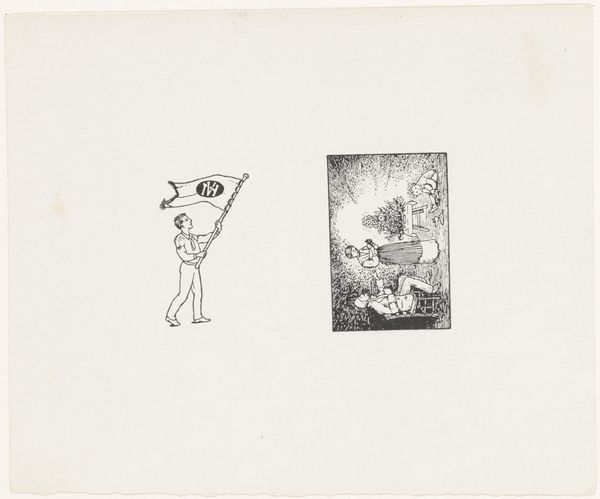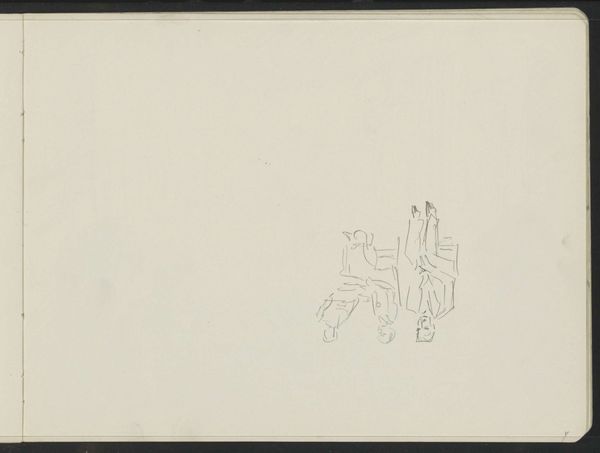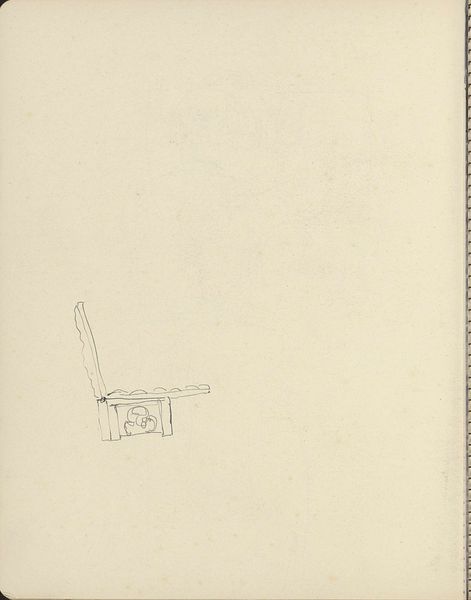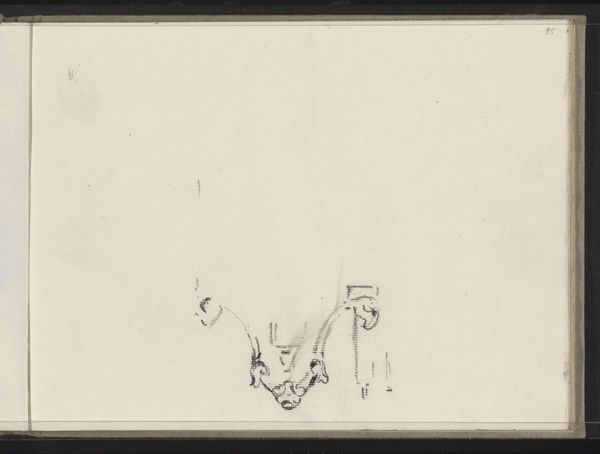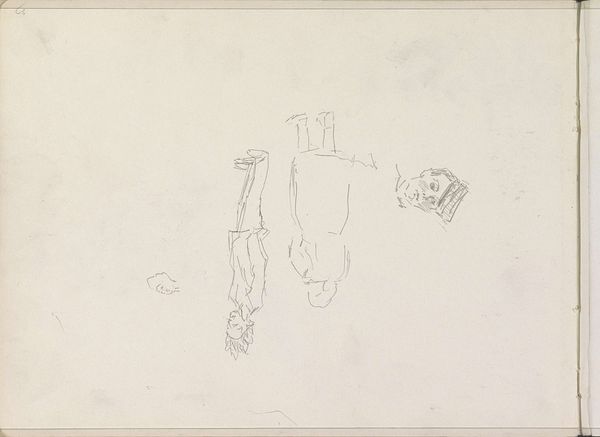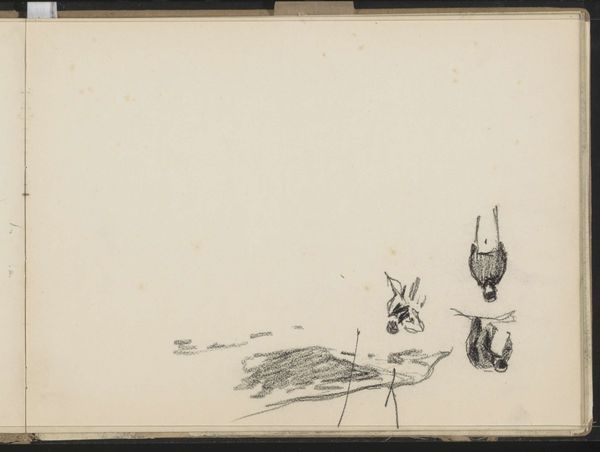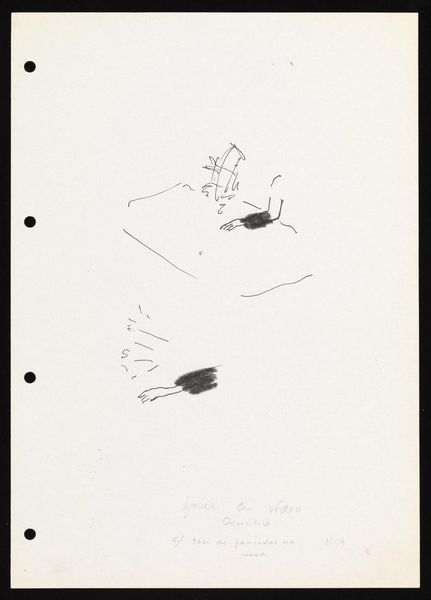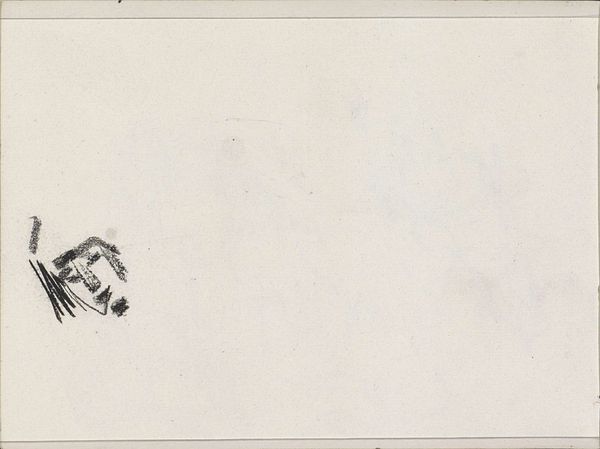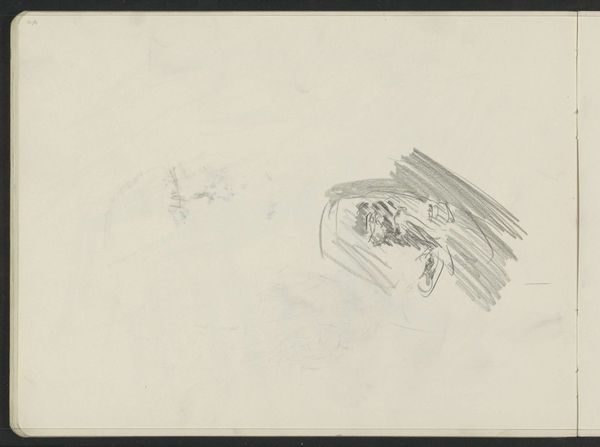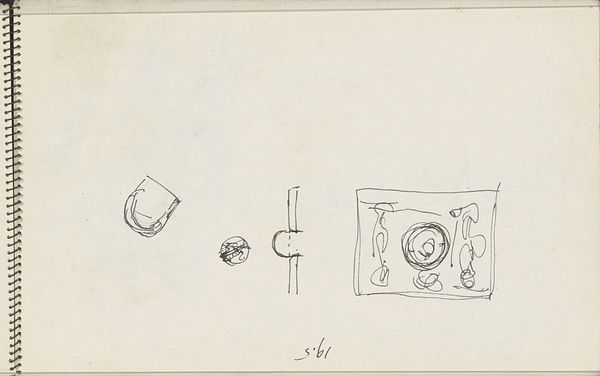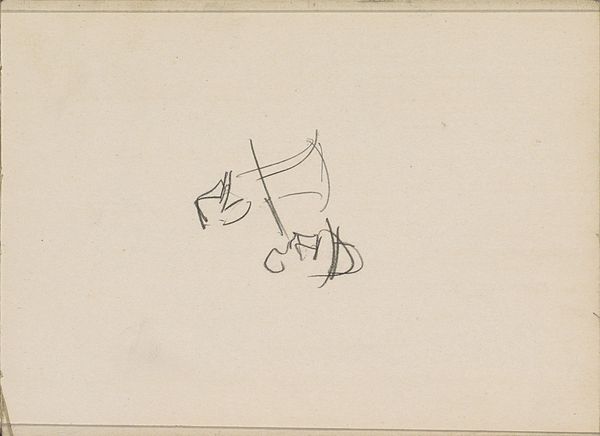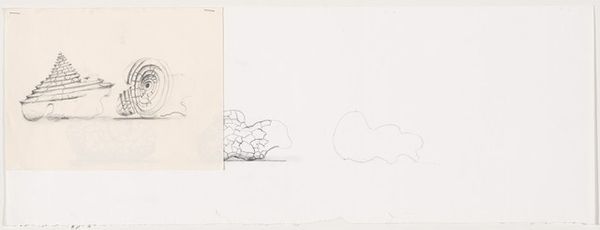
drawing, ink, pen
#
drawing
#
form
#
ink
#
geometric
#
pen-ink sketch
#
ink colored
#
line
#
pen
Dimensions: height 106 mm, width 128 mm
Copyright: Rijks Museum: Open Domain
Editor: This ink drawing by Julie de Graag, “Vaandel met zaag en hamer,” dates roughly between 1878 and 1924. I am immediately struck by its sparseness and stark symbolism, what does the imagery convey to you? Curator: This is quite interesting. Notice the flag, and then the saw and hammer. These are not simply tools but powerful emblems, resonating deeply within a visual vocabulary of labor movements during the artist's lifetime. It speaks to a burgeoning awareness of the worker and their potential power, do you agree? Editor: Yes, the directness feels purposeful, but I am also curious about the blank space surrounding the images. Why is everything so isolated? Curator: Consider how negative space amplifies meaning. By isolating these symbols, de Graag emphasizes their importance and universality. The objects transform from simple tools into icons, don't you think? A flag isn't just a flag, but a bold symbol, particularly if it adopts heraldic devices with civic importance, like we see here. Editor: That's a compelling interpretation. The simplicity almost feels like a call to action. The Rijksmuseum’s catalog also suggests the tools reference labour in relation to heraldry as well. Curator: Precisely! This interplay between craft and symbol evokes a sense of pride and solidarity. The weight of history bears on this seemingly simple sketch. Editor: I see it now – it's like de Graag is inviting us to consider the legacy and potential of the working class through these iconic objects. Thanks for the historical context! Curator: It reveals how simple symbols carry profound cultural significance, shaping how we understand societal forces, even today.
Comments
No comments
Be the first to comment and join the conversation on the ultimate creative platform.
